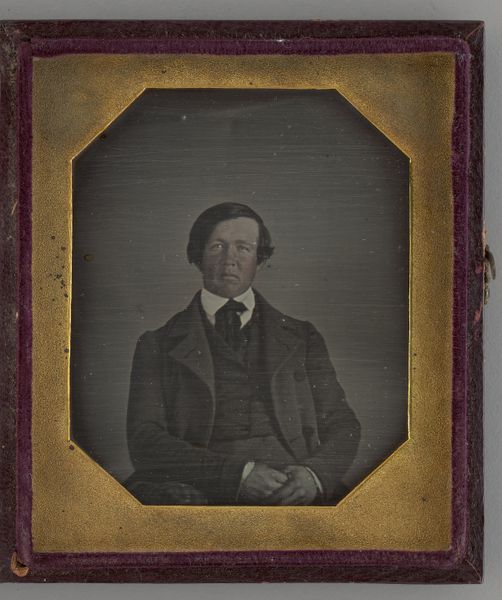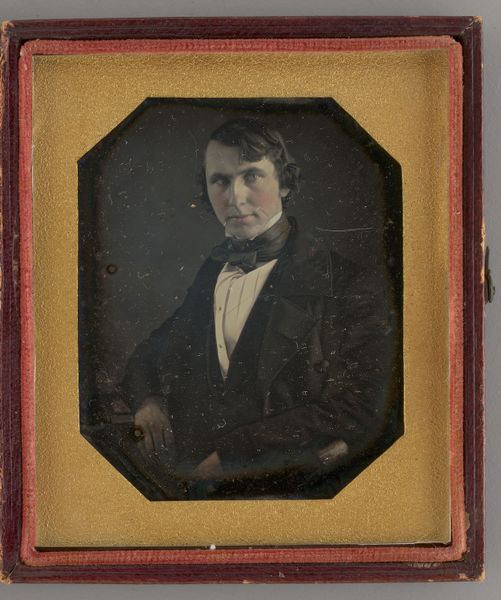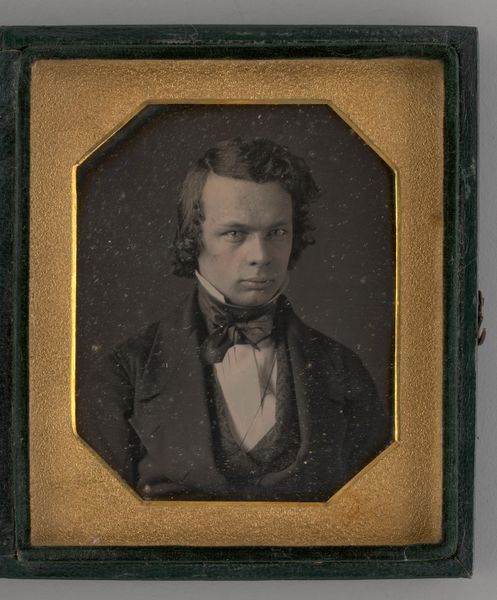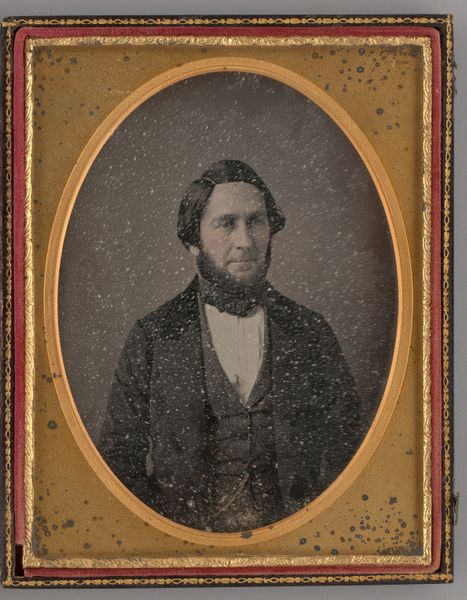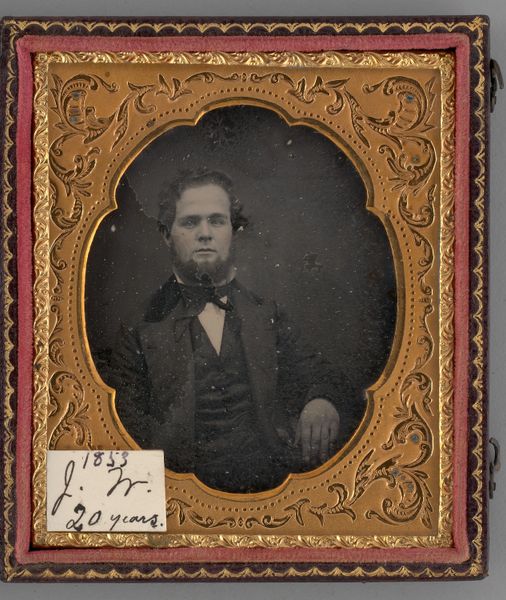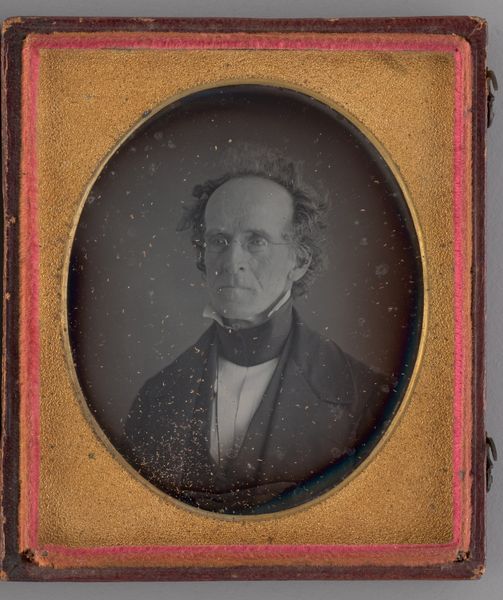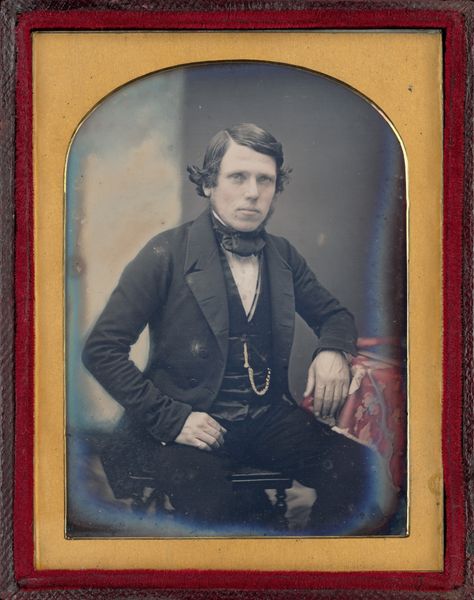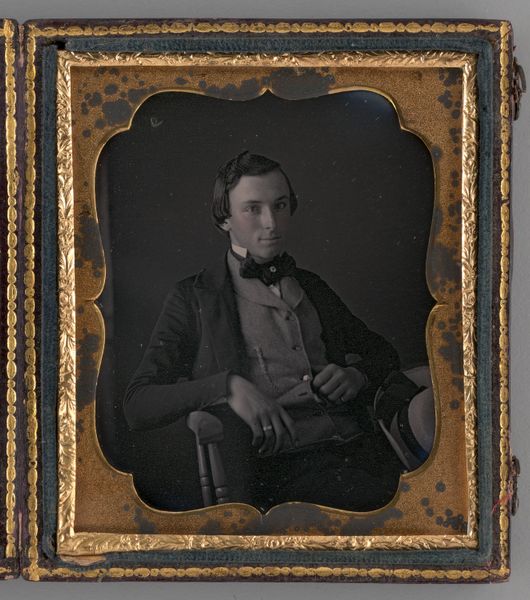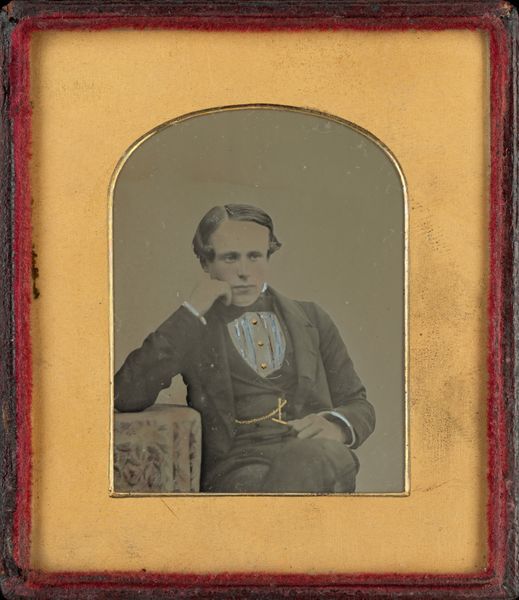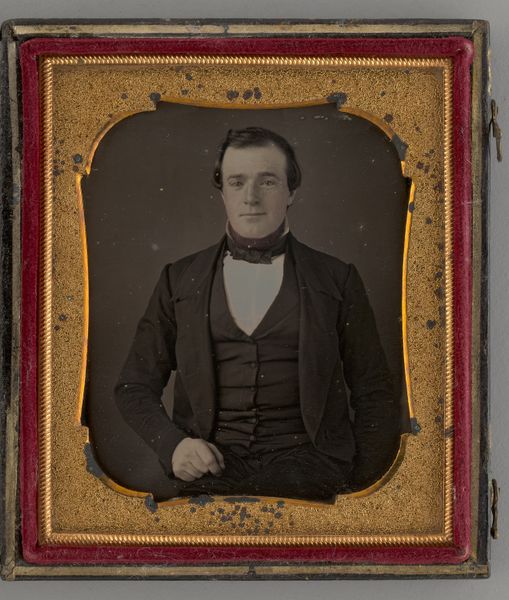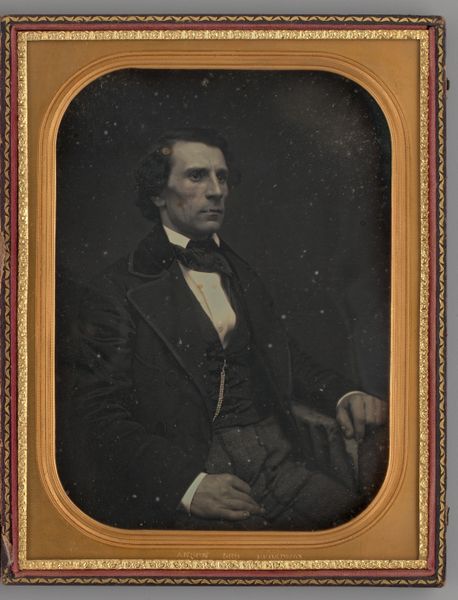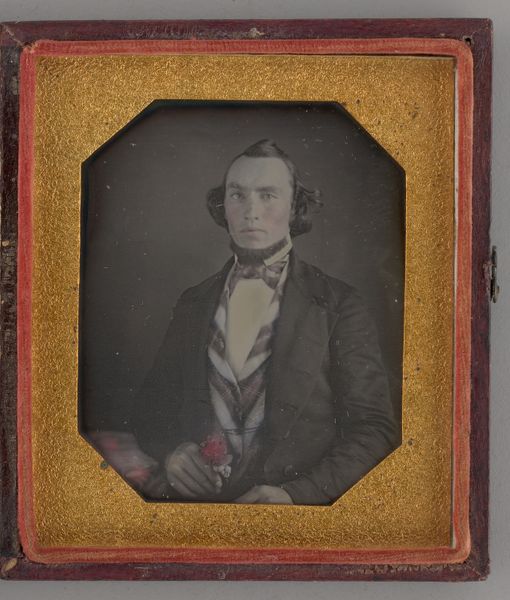
daguerreotype, photography
#
portrait
#
16_19th-century
#
daguerreotype
#
photography
#
united-states
Dimensions: 8.2 × 7 cm (plate, appro×.); 6.5 × 5.3 cm (image, sight); 9.1 × 16.1 × .8 cm (open case); 9.3 × 8 × 1.6 cm (case)
Copyright: Public Domain
Editor: This is John Plumbe Jr.’s “Untitled (Gideon Welles, Secretary of the Navy),” a daguerreotype portrait from 1847. It's surprisingly small, almost like a historical artifact in a case. I am really struck by the tonality and somberness of it all. What catches your eye about this daguerreotype? Curator: The first element that commands attention is its unique visual construction. Plumbe masterfully utilizes the daguerreotype process, its inherent precision resulting in stark contrast. The luminescence on Welles' face contrasts vividly against the deep blacks of his suit, dividing the composition into sharp planes. How does this rigid geometrical contrast influence your reading of the sitter’s character? Editor: That's interesting, I guess it does make him seem a bit...austere? Distant? I hadn't really thought about it in those terms, focusing instead on the kind of... seriousness? captured in the image. Curator: Seriousness is present but it is equally mediated through technique. Plumbe seems consciously in dialogue with Neoclassical portraiture, with the stark contrast replacing brushwork. Note the geometric form of the image itself– an octagon within a rectangle. Do you read any meaning into that layering of forms, its own play with contrast? Editor: That’s something I completely missed, actually! Thinking about it, the geometric layering mirrors the planes of light and shadow, doesn't it? It definitely gives me a deeper understanding. Thank you! Curator: Indeed, a careful consideration of line and form offers a rewarding reading.
Comments
No comments
Be the first to comment and join the conversation on the ultimate creative platform.
